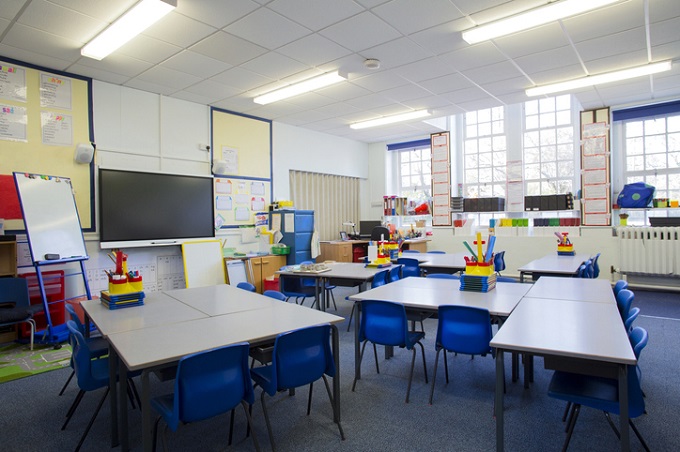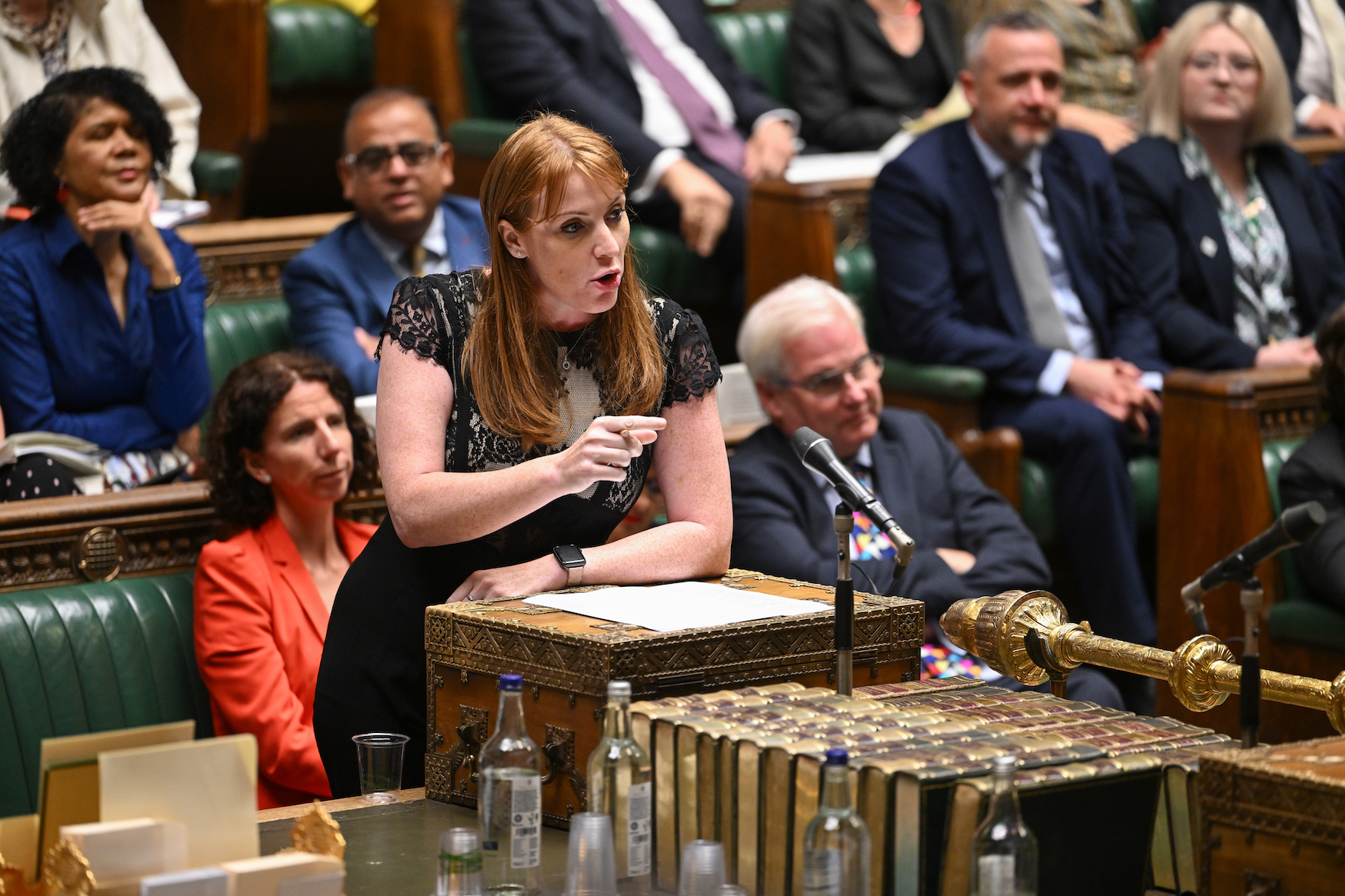How high are class sizes in the UK
Despite experiencing something of a reduction, class sizes in the UK remain relatively high in international terms.
In 2018, the United Kingdom had an average of 26 students per primary school class. These were the highest in Europe that year. France and the Netherlands averaged 23 primary school children per class, Germany had an average class size of 21 students, Italy had 19, and Luxembourg had an average of just 15.9 primary school students per class.
When it came to class sizes in relation to secondary school children, the United Kingdom was faring slightly better than the rest of Europe. In 2018 the average class size in the UK at secondary age was 23.1. This was below Spain at 25.4, France at 25.3, and Germany at 23.3. The UK’s level was though higher than Italy at 20.9 and Latvia at 15.8.



Class sizes were a big political issue in the late 1990s.
The debate around class sizes
Class size is a highly emotive issue, albeit one which has today currently sunk into the background of the wider political debate.
Lower class sizes and better results
Common sense and extensive body of research suggest that the smaller the class a child is in, the more individual attention he or she can receive, which in turn will feed through into educational attainment.
However, while this is the academic orthodoxy, research is not unanimous on this point. A 2000 review of previous research by the London School Of Economics and Exeter University suggested that good teaching and classroom management was a more important variable than class size. It was even claimed in 2000 by David Carter, the head of the ‘National Remodelling Team’ advising the Government on teachers’ workloads – that larger class sizes – of up to 80 could in fact lead to improved standards.
Nonetheless, class size is perceived as an important factor by parents. A May 2001 MORI survey for the Independent Schools Information Service showed it to be the biggest reason behind parents’ decisions to send their children to private schools (cited by 36% of parents).
A report published in December 2011 by the Department for Education looked at the impact of a rising birth rate on pupil numbers. The Department for Education previously published a ‘Class Size and Education in England evidence report’ that looked at how class sizes could impact educational outcomes. It found that, taken as a whole, smaller class size had “a positive impact” on attainment and behaviour in the early years of school, but the effect “tends to be small and diminishes after a few years”.
Class size pressure and educational choice
Efforts to reduce class sizes have also mitigated against other educational objectives on occasion. Parental choice was clearly restricted when Local Education Authorities were empowered to refuse admissions to particular schools on the grounds of reducing class sizes. This led to a number of High Court cases, notably against Surrey County Council in 2000, with parents claiming that their children had been discriminated against.
Class sizes in secondary schools
During the early 2000s, some critics of the Government alleged that reductions in primary class sizes had only been achieved at the expense of class sizes in secondary schools. The Government did acknowledge this initially, insisting that it was a necessary price to pay for achieving the desired goal in primary schools.
Then Education Secretary David Blunkett argued in April 2000 claimed, “Either they want us to ring fence ear-marked money and say ‘you can only spend it on class size’ or they want the freedom to spend it in the school on raising standards”, .
To date, no party has committed itself to introducing statutory requirements for secondary school class sizes, at least partly because of the different class teaching arrangements in secondary schools.
Better ways of increasing standards
Others have focused on how the class size number is a headline political term, and there may instead be better ways of improving educational standards.
An academic study by Hattie (2009) found the impact of reducing class size on attainment to be smaller than a range of other interventions. Hattie argues that value for money in raising attainment in schools is better achieved through other interventions. This is supported by research from Rivkin et al (2005) which finds that increasing teacher effectiveness has greater value for money than reducing class sizes, while Hanushek (2011) suggests assigning the most effective teachers to the largest classes to maximize the potential economic benefit
This whole area remains one of vigorous debate in educational circles, and other proposals aimed at driving up standards have included the role of one-to-one adult supervision, and increasing the number of Classroom Assistants alongside qualified teachers.
How are class sizes measured?
Class size is a statistical measure employed by the Department for Education which measures the number of pupils taught in a class during a single selected period of a particular school day. This day is usually set to be in January each year to coincide with the Annual School Census.
From 2003, all class sizes have been measured in the course of the Census. Previously, infant class sizes were measured in September.
Although similar, class size is a distinct measure from “pupil-teacher ratio”. This is calculated by taking the full-time equivalent (FTE) number of all pupils in a school (where a part-time pupil counts as one half) and dividing it by the number of FTE teachers employed (which is calculated by looking at the number of hours worked by teachers).
As such, it can be seen that class size provides much more of a snapshot figure, albeit one that corresponds more closely to the experience of pupils themselves.
Class Sizes – Recent History
Class size has been a significant issue for many years, with concerns long expressed about the quality of teaching possible when a single teacher is responsible for large numbers of pupils. Dwindling teacher retention and low schools funding had, by the mid-1990s, led class sizes, particularly in primary schools, to be regarded as something of a crisis. They were assumed to feed through into low academic attainment.
Tapping into that concern, in its 1997 election manifesto, the Labour Party pledged to cut class sizes to 30 or under for 5, 6 and 7 year-olds. This was one of the five key pledges that featured on Labour’s famous election “pledge card”.
After its election the newly elected Labour Government put this requirement on a statutory footing: Clause 1 of the Schools Standards and Framework Act 1998 placed a duty on Local Education Authorities (LEAs) and schools to restrict class sizes to 30 in Key Stage One classes from September 2002.
This date was subsequently brought forward to September 2001, when it was clear that it would be met. During the 2001 general election campaign, the Liberal Democrats pledged to cut primary school classes to 25 or less, but the success of the class size initiative to that time was widely viewed to Labour’s credit, with clear public demands for more action limited.
However, launching the Liberal Democrats General Election Manifesto 2010 leader Nick Clegg once again pledged to cut class sizes saying: “under the Liberal Democrats, there will be more money in your local school to give your children the individual attention they need to thrive, cutting class sizes and providing more one-to-one tuition.” And following the formation of the Coalition government, Mr Clegg remained consistent by promising “we will aim to cut class sizes.”
Although class sizes in primary schools are still higher in the UK than in other European countries, the impetus behind class sizes as a political issue appears to have now lost some of the momentum that it had at the start of the Century.
Quotes
“Overall, the available evidence…..suggests that class size reduction policies are not the best option in terms of value for money to raising pupil attainment, compared to others such as increasing teacher effectiveness. Broadly evidence suggests that class size reduction policies have an uncertain and diminishing effect on pupil achievement in the long run.” -Department for Education ‘Class Size and Education in England evidence report’ – December 2011
“The idea that infant class sizes could go beyond 30 for whatever reason is a backward step. This is of no benefit to anyone, least of all children”…”Large class sizes will increase the dependency upon teaching assistants who, while providing very useful support and back up in the classroom, have been shown to have little effect on attainment”…” We need to see class sizes reduced to at least 20 to ensure pupils get the maximum support and attention from their teacher.” – Christine Blower, General secretary of the National Union of Teachers, 2011.


























